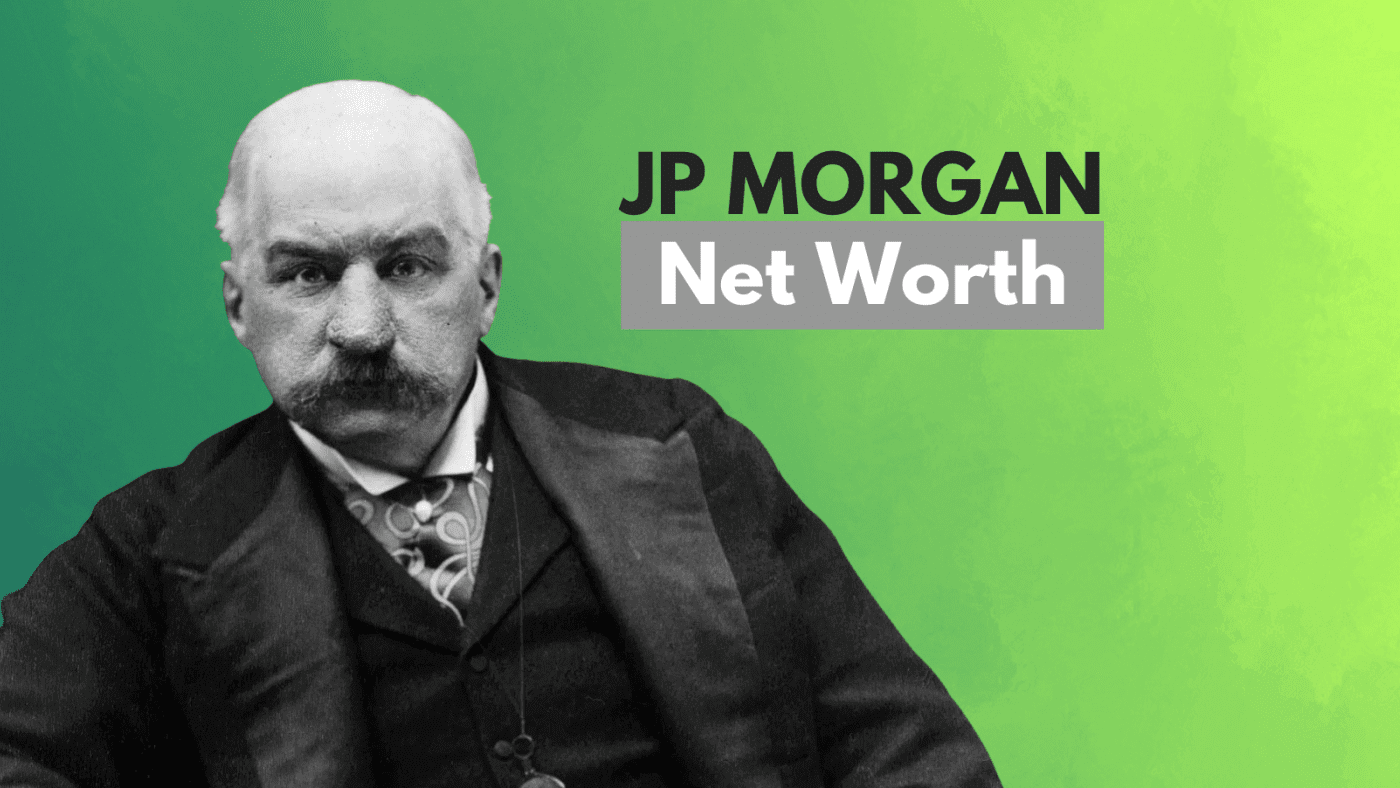At the time of his passing, J.P. Morgan had an inflation-adjusted net worth estimated to be between $25 billion and $45 billion. The range in valuation is influenced by the varying values of his real estate holdings and art collection. J.P. Morgan is renowned for his leadership of the banking firm J.P. Morgan and Co. and his illustrious career on Wall Street.
His estate’s total value at the time of his death was $68.3 million, with half of this value attributed to his stakes in New York and Philadelphia banks. In today’s currency, this estate would be worth approximately $1.39 billion when adjusted for the Consumer Price Index (CPI) or $25 billion when adjusted based on its share of Gross Domestic Product (GDP).
J. P. Morgan Net Worth 2023
| Category: | Richest Business › Richest Billionaires |
|---|---|
| Net Worth: | $25 Billion |
| Date of Birth: | Apr 17, 1837 – Mar 31, 1913 (75 years old) |
| Place of Birth: | Hartford |
| Gender: | Male |
| Profession: | Banker, Financier, Businessperson |
| Nationality: | United States of America |
Early Life and Career Beginnings
John Pierpont Morgan, better known as J. P. Morgan, was born on April 17, 1837, in Hartford, Connecticut. His father, Junius Spencer Morgan, hailed from the influential Morgan family. Morgan received his education at the English High School of Boston, a prestigious commerce institution. After graduating, he pursued further studies in French at a school in the Swiss village of La Tour-de-Peilz and later attended the University of Gottingen to hone his German language skills.
Equipped with his business education, Morgan commenced his career in 1857 at the London branch of Peabody, Morgan & Co., a company co-founded by his father and George Peabody three years earlier. After just a year, he relocated to New York City and began working for another banking firm, Duncan, Sherman & Company, an extension of his father’s business. During the American Civil War, Morgan avoided military service by paying a substitute $300 to take his place. In 1864, following Anthony Drexel’s retirement, his father’s company was rebranded from Peabody, Morgan & Co. to J. S. Morgan & Co.
Recommended: Mukesh Ambani Net Worth 2023
Career
In 1871, Morgan partnered with the Drexel family of Philadelphia to establish the firm Drexel, Morgan & Company. After Anthony Drexel’s passing, the firm underwent a name change to J. P. Morgan & Company in 1895. His firm maintained close associations with his father’s company, J. S. Morgan & Company, as well as other prominent firms like Drexel & Company of Philadelphia and Morgan, Harjes & Company of Paris. His focus was primarily on reorganizations and consolidations, and by 1900, his firm stood as one of the world’s most influential banking institutions.
Morgan’s primary business approach involved taking over struggling businesses and restructuring their operations and management to restore profitability. This process was often referred to as “Morganization.” Subsequently, leveraging his reputation as a banker and financier, he would attract investors to these revitalized enterprises.
He concentrated much of his efforts on the American railroad industry, not only acquiring many railroads, including the Albany and Susquehanna Railroad, Philadelphia & Reading Railroad, and Chesapeake & Ohio Railroad but also reorganizing these rail systems to enhance their efficiency. In 1889 and 1890, he convened conferences that brought together railroad presidents to establish agreements pertaining to maintenance and the establishment of “public, reasonable, uniform, and stable rates.”
Recommended: Amitabh Bachchan Net Worth 2023
After his father’s death in 1890, Morgan assumed control of J. S. Morgan & Co., which was later renamed Morgan, Grenfell & Company in 1910. In 1900, he negotiated a significant deal with Charles M. Schwab, the president of Carnegie Co., and industrialist Andrew Carnegie to acquire Carnegie’s business. Morgan merged Carnegie’s enterprise with several other steel and iron companies to form the colossal industrial entity, the United States Steel Corporation (U.S. Steel). U.S. Steel boasted an authorized capitalization of $1.4 billion, becoming the world’s first billion-dollar company.
Between 1890 and 1913, a total of 42 major corporations were organized or had their securities underwritten by J. P. Morgan & Company. These corporations included American Telephone & Telegraph, International Mercantile Marine Company (owner of the White Star Line, operators of the ill-fated RMS Titanic), General Electric, Federal Steel Company, and the United States Steel Corporation.
Disclaimer Statement: Guest Author Noelle Devoe wrote and edited this Article based on their best knowledge and understanding. These opinions and remarks are not endorsed or guaranteed by Rover Magazine or rovermagazine.com. The Rover Magazine does not guarantee this article’s content. Readers should verify and use their judgment before trusting the content. Also, the Images used in this Article are the copyright of their Respective Owners. Please use our Comment Box or Contact Us form to report this content. This information is not accountable for losses, injuries, or damages.
DID WE MAKE A MISTAKE?
Submit a correction suggestion and help us fix it!
- Denzel Washington Siblings: Living in the Shadow of Greatness - June 29, 2024
- Andrew Santino Wife: A Closer Look at Their Love Story - June 29, 2024
- Misty Severi: Bio, Wiki, Education, Hobbies, Career, Net Worth & More - May 30, 2024
